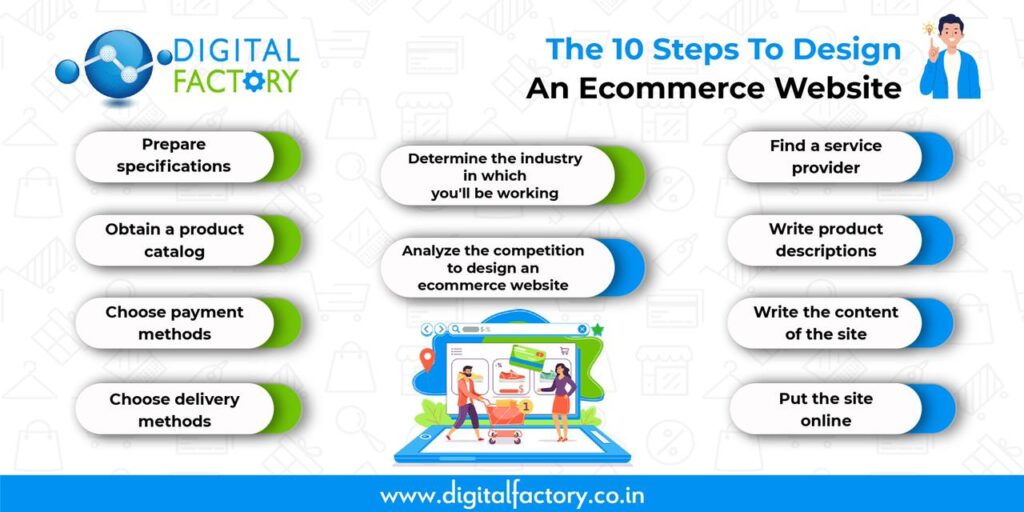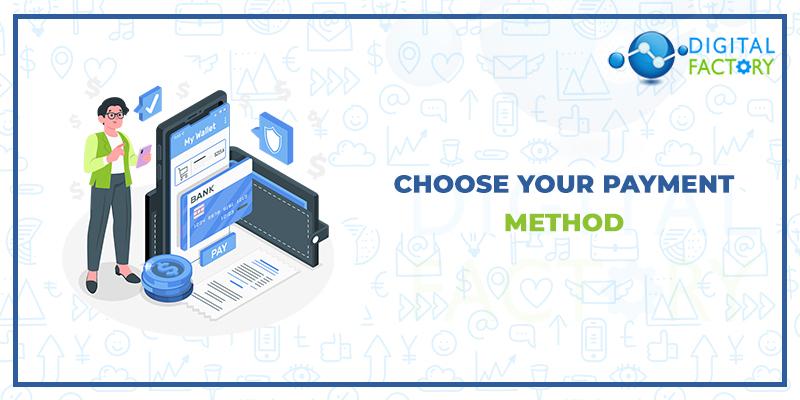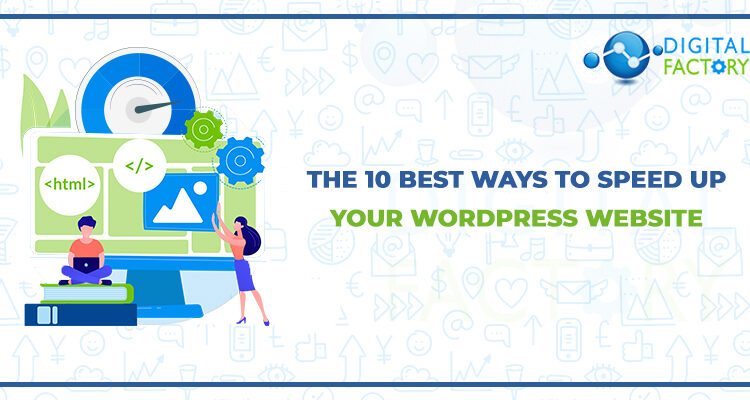
Do you want to establish an e-commerce site but don’t know where to start or how to do it? Do you want to get a sense of how much work there is before you start a project? Here’s a rundown of the procedures you’ll need to design an ecommerce website..!!

1 – Determine the industry in which you’ll be working
Begin by deciding what kind of product you wish to sell. You almost definitely have an idea of what you want to sell if you’re starting an e-commerce firm.
2 – Analyze the competition to design an ecommerce website
After you’ve defined the activity sector, you’ll need to do a market analysis. Determine market share by identifying competitors, their marketing posture, and their manner of communication. In order to stand out from the crowd, you’ll need to choose your communication axis. Find out what makes you stand out from the crowd. Is there anything you sell that they don’t? Imagine a remarkable and distinct communication if you don’t already have one. Define your target clients’ gender, age group, and purchasing habits, among other things.

3 – Prepare specifications
Once you’ve decided where you want to go, you’ll need to put together a real plan for building your merchant site. What characteristics are you looking for? How should your website function? What kind of tree structure do you want, and how many pages do you want? Also, explain the findings of your market research so that the service provider has a better understanding of your project’s competitive environment and can assist you with advice.
4 – Obtain a product catalog
A product catalog is a must-have for any e-commerce business. Contact suppliers for information on the products you’ll be selling. You will make importing into your e-commerce system easier if you have a file ready to use and fully filled out.
5 – Choose payment methods
Another necessary step in the design an ecommerce website is the selection of payment methods. These must be defined upstream in order to put them up and configure them on the site. It can take time for a service provider to set up a payment method, so plan beforehand. One payment option may be more popular than another depending on the type of clientele targeted. Offering three distinct payment options, on average, satisfies 99 percent of Internet users.

6 – Choose delivery methods
The delivery method is the last thing to consider. What shipping options will you provide for your items? Is it possible to have it delivered to your home? Is it possible to deliver from a relay point? You must consider the type of product you sell, the prices of your competitors, and the ultimate invoice for an order while making this decision. Customers are scared away by shipping charges that are too expensive! Internet users may search elsewhere if you offer things at a lower price than your competitors but your delivery rate does not make you more competitive. Customers compare offers in e-commerce, and the shipping price is a consideration that should not be overlooked. This is also the most important criterion for Internet users!
7 – Find a service provider
Once you’ve decided to design an ecommerce website, you can start looking for a service provider to build your website. He could work for a company, as a freelancer, or as an inside employee. In any event, you must ensure that he is knowledgeable about the solution and the technology you require. Check at their portfolio and call some of their previous clients to be sure they’re sincere.
8 – Write product descriptions
Don’t overlook the content of the product papers, as it will be both what sells and what references your online store. This is a significant amount of work; do not delay in getting started and assigning all of your employees to it. It’s not uncommon for an e-commerce site development project to be delayed since the texts to be merged aren’t complete, and article sheets that aren’t filled with material will not convert and will be difficult to reference.
9 – Write the content of the site
The content of your ecommerce site’s pages is critical for Internet visitors’ information and natural referencing. For example, the “Who we are” page serves to reassure customers about the organization by attesting to its presence, procedures, and experience. In order to notify the customer about prices and timeframes, the delivery page must also be clear. Furthermore, if you intend to use a blog section or content pages to help your SEO, write these texts ahead of time. Make sure your thematic pages are ready to go online so that natural reference can begin right away. Having blog entries prepared in advance also aids with content feeding.
10 – Put the site online
That’s it, D-Day has arrived, and your e-commerce site is now live! Users will be able to witness the results of your efforts and place their initial orders online. There’s still a lot to do: respond to emails, fulfill orders, manage payments, solicit reviews, run promotions, engage on social media, and improve your SEO.




